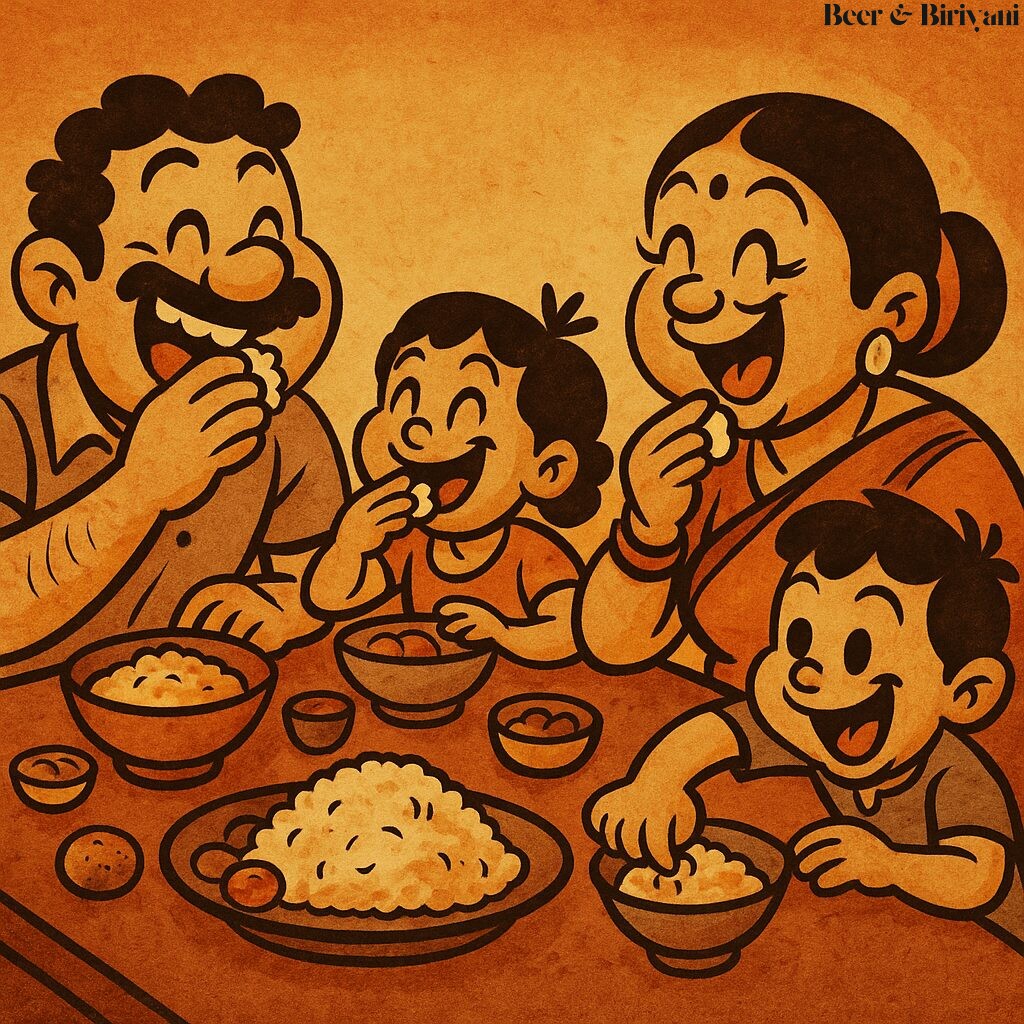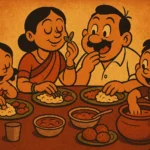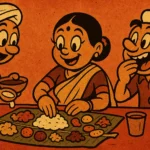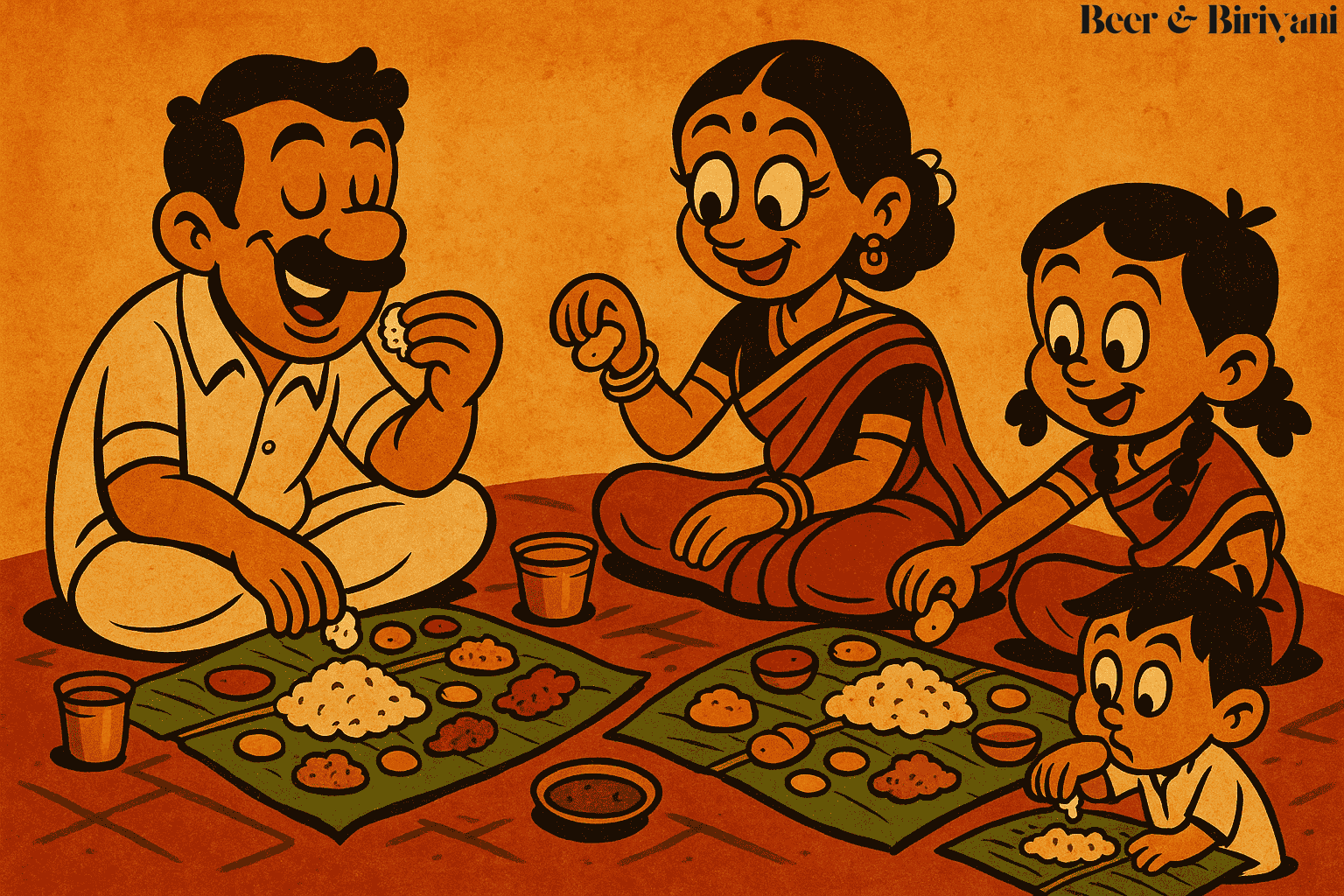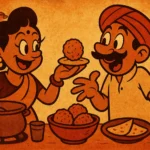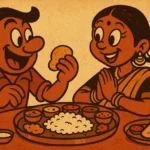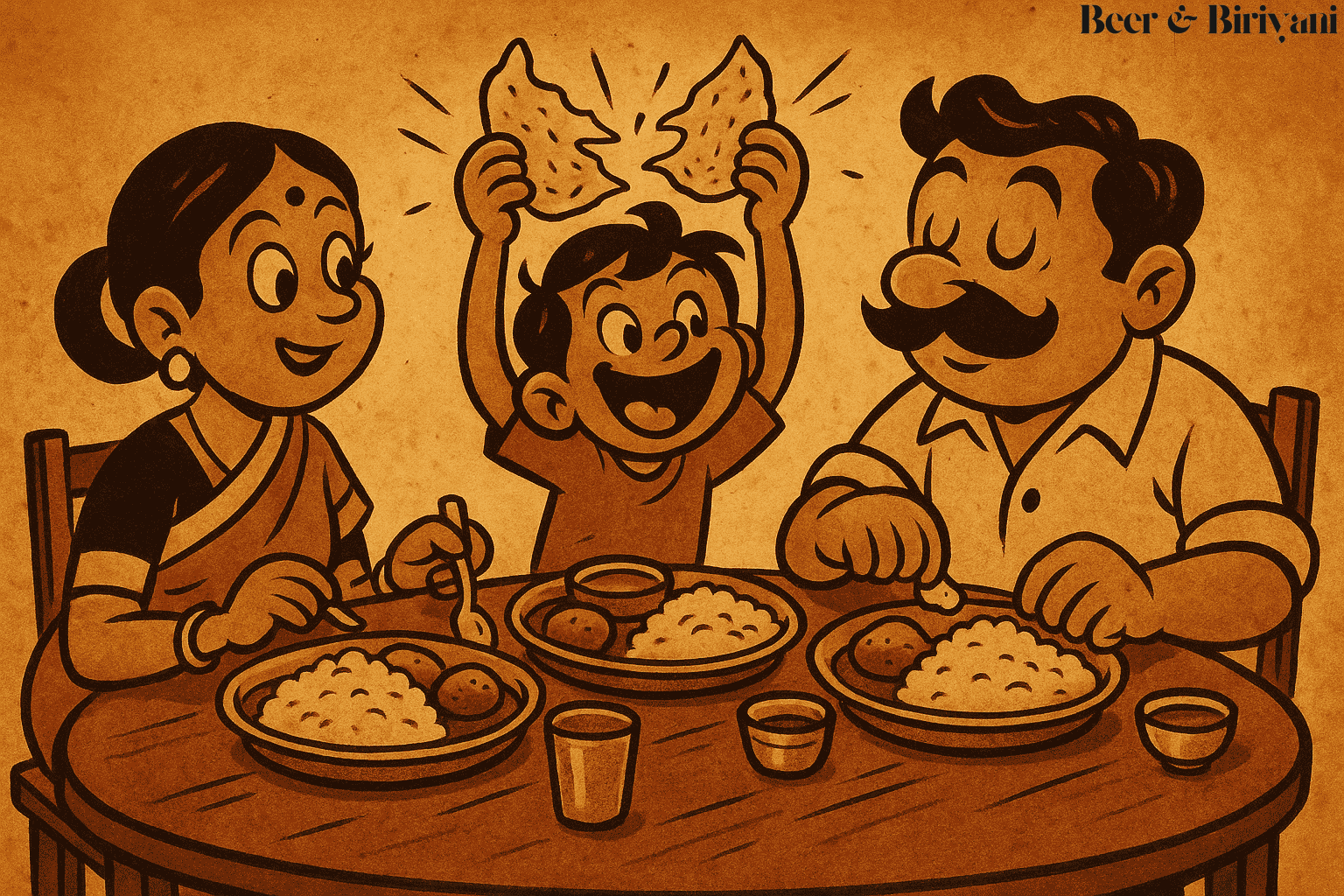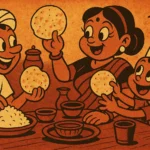There’s a moment just before you eat with your hand when your fingers hover over the plate, assessing. The rice is warm, the sambar has pooled slightly at the edge, and the papad threatens to crack if pressed too hard. You gather, gently. Index and middle finger pushing food toward your thumb, pinky delicately avoiding the mess. Then, with a practiced flick, the mixture lands in your mouth. Not elegant. But intimate. Honest. And deeply, viscerally satisfying.
Growing up in Mumbai, this was just how we ate. Especially at home. Especially with rice-based meals. At weddings, banana leaf feasts. At grandmother’s house with her coconutty fish curry. We didn’t think of it as a technique. It just was. And then I moved to Austin, started adulting, and somewhere along the way, started using forks more often. Spoons at restaurants. Chopsticks when I was feeling cosmopolitan. My fingers got demoted to “clean-up crew.”
But every once in a while—usually when I make curd rice or bhindi sabzi—I give in. I push the silverware aside, wash my hands like I’m entering a temple, and eat with five fingers. Not for nostalgia. For clarity. Because eating by hand doesn’t just feed the body. It remembers things the fork forgot.
Not Just Cultural – Sensual
The argument for eating with your hands isn’t just cultural. It’s biological. You feel the temperature, texture, moisture. You sense the balance—too much rasam, too little rice. Your fingers adjust. They become your first set of taste buds. And when the food touches your skin before your tongue, your brain is already primed to receive it. There’s science here, sure. But also instinct. The kind you don’t need to study to understand.
Across India, eating by hand is less about rejection of modernity and more about a different kind of etiquette. There’s order. You eat with your right hand. You don’t let the fingers touch your lips. You wash before and after. In Kerala, it’s almost a ceremony—the way people mix parippu and ghee into rice with slow, circular swirls. In Tamil Nadu, the act of folding sambar rice into a neat, scoopable mound is practically an art form.
“Primitive” or Just Misunderstood?
I once had a classmate in college (well-meaning, Texan, slightly confused) ask me if I ever felt “weird” eating without cutlery. I paused. Then asked if she felt weird eating popcorn with her hands. Or tacos. Or pizza. Or barbecue ribs. She blinked. That’s the thing—we eat so many things by hand, but when the food is brown and saucy, suddenly it’s “exotic” or “messy.”
In truth, using hands to eat dates back millennia. Ayurvedic texts describe it as part of the five-element connection—where each finger represents earth, water, fire, air, and space. The act of eating becomes a full-body ritual, not just an act of consumption. It’s not primitive. It’s present. Focused. Fully engaged.
The Memory in the Motion
Some of my earliest memories of my grandfather are of him sitting cross-legged on the floor, eating rice and rasam with exaggerated circular motions, sucking air through his teeth as he chewed. My mother would scold him for being noisy. He’d wink at me. “Food should talk back,” he’d say. I didn’t know what he meant then. I do now.
Food tastes different when you shape it yourself. You know exactly how much chili ended up on that bite of pickle, how many mustard seeds are hiding in the dal, how the curd rice needs just one more sprinkle of salt. No measuring spoons, no etiquette courses. Just instinct. And trust in your hands to know what to do.
Relearning in a Foreign Kitchen
In my Austin kitchen, when friends come over, I often serve dal-chawal with spoons. It’s polite. Expected. But if someone asks—“Do you usually eat this with a spoon?”—I smile and say, “Not when I’m alone.” Because alone is when I return to muscle memory. When I recreate the rhythm. Thumb and fingers gathering, folding, flicking. The sound of ghee-softened rice squishing just so. The slow, grounded act of eating like my body remembers best.
My son, of course, prefers forks. “It’s cleaner,” he says. And I nod. But one day, when he’s older, maybe I’ll teach him the flick. The fold. The joy of licking curd rice off his fingers when no one’s watching. Not because it’s better. But because it’s real. Because in a world increasingly touched by screens, there’s value in touching something sacred, something simple, something edible.
It’s Not Just Eating
To eat by hand is to acknowledge the food as more than fuel. It’s to connect. To engage. To honor the labor that made it. To feel its warmth before it enters you. It’s messy, yes. But so is life. And in that messiness lies poetry—warm, seasoned, and best eaten with your fingers.
Born in Mumbai, now stir-frying feelings in Texas. Writes about food, memory, and the messy magic in between — mostly to stay hungry, sometimes just to stay sane.

